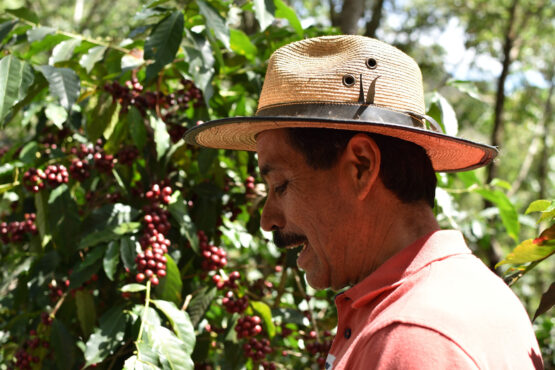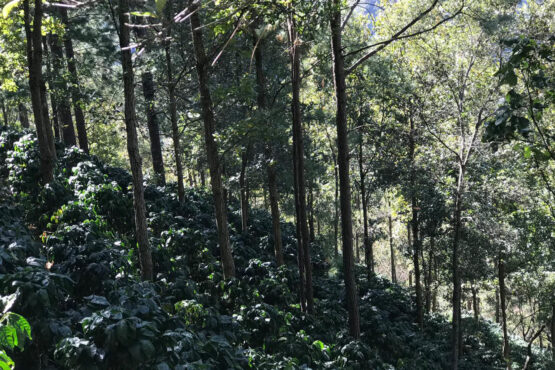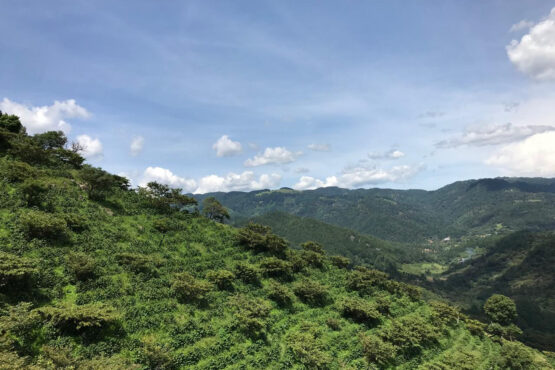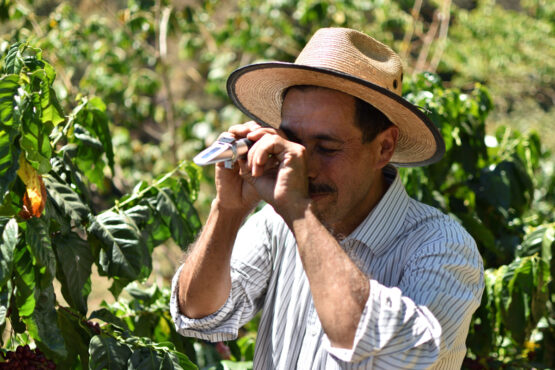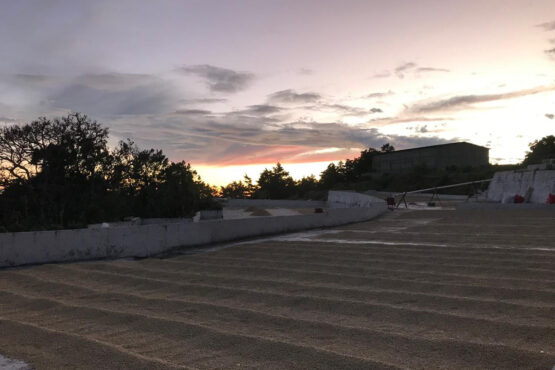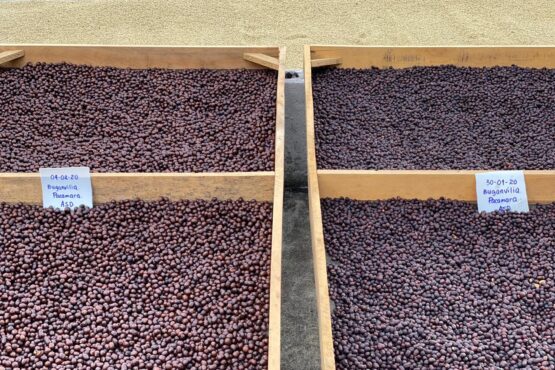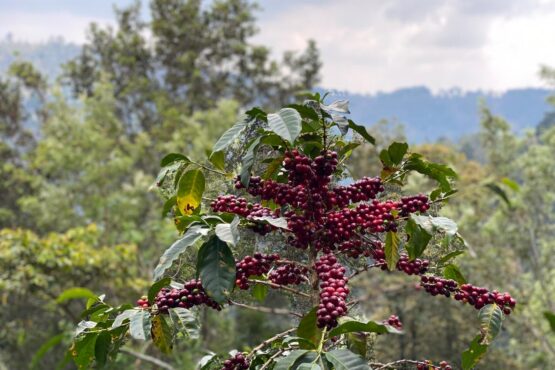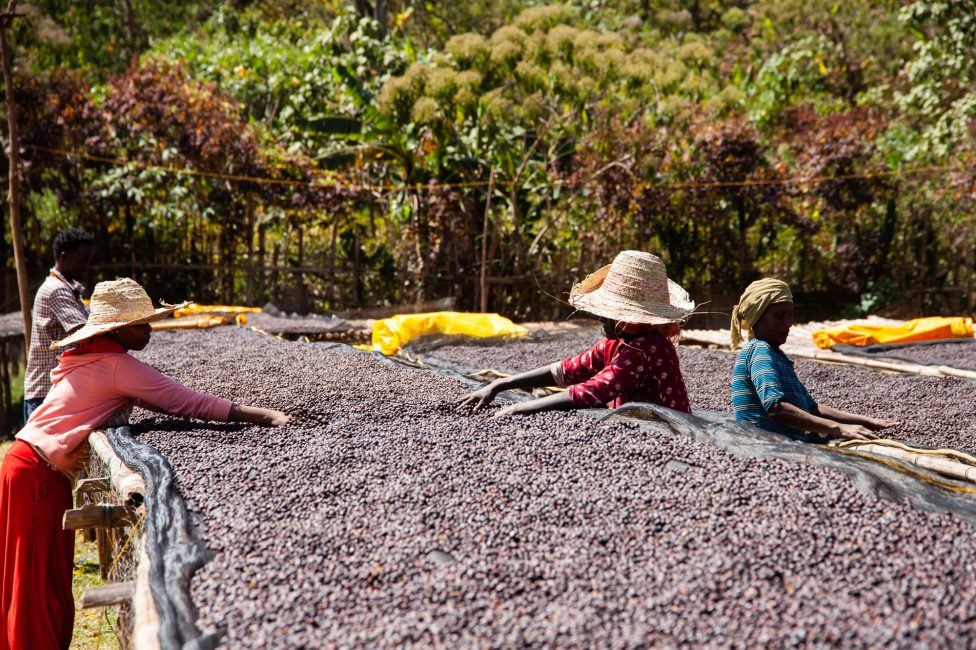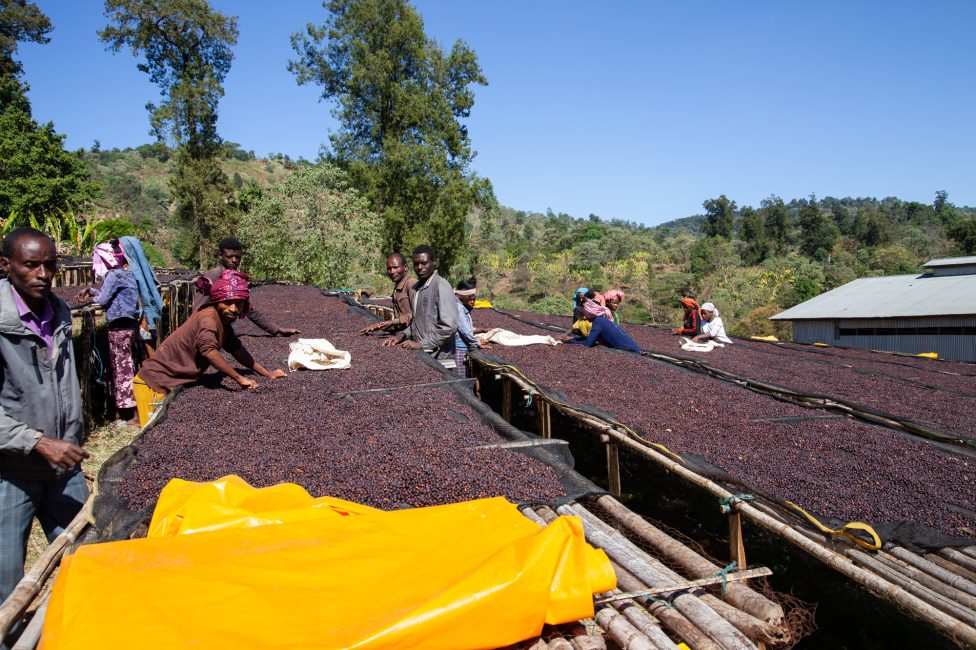La Loma
Bright and lifted, with apricot, honey, sweet cherry and a tea-like body. Great structure and balance.
This 100% Pache variety coffee comes from a plot of land called La Loma which is one of five parcels of land on El Guatalón estate, located in Santa Rosa, Guatemala. The estate is owned and managed by third-generation farmer Guillermo Juarez.
HISTORY OF EL GUATELÓN
El Guatelón estate was established in 1910 by Daniel Juarez, Guillermo’s grandfather. It was the first commercial coffee plantation in the region, and Daniel planted Typica and Mundo Novo varieties on the farm. Daniels son, Juan Alberto Juarez Reyes took over the farm in the 1970s, who later handed the farm down to his son, Guillermo in 2010.
When Guillermo took over the estate, he was determined to focus on producing specialty coffee in order to achieve higher prices for their efforts. He had heard of the Cup of Excellence and decided to participate. In 2012 they came very close to qualifying (finishing 24thand just outside the final line up of 23 farms) and were thrilled to receive their first accolade in 2014. Since then the farm has placed nearly every year, most recently in 2020 where it placed 27th. These awards and this recognition is very motivating for Guillermo, who loves the challenge:
“We want to go further. We know we can deliver higher quality. After all, we know living and succeeding is just about that: always make an extra effort.” – Guillermo Juarez
ABOUT THE ESTATE
El Guatalón estates is 75 hectares in size, 30 hectares of which is dedicated to coffee, and the rest forest. The coffee is planted on 5 parcels of land that have been divided by altitude and soil type – La Loma, La Bugambilia, El Cuje, Los Pajuiles, and Guatalón. La Loma is s located in the municipality of Mataquescuintla, whereas the other parcels of land are located in the neighbouring municipality of Santa Rosa de Lima.
El Guatalón has many different varieties growing – as each generation has introduced new varieties to the farm including Typica, Mundo Novo, Pache, San Ramon, Caturra, Catuaí and most recently Villa Sarchi, Pacamara and Maragogype. These varieties flourish in different microclimates and so each has been carefully planted where it is best suited across the estate.
ABOUT LA LOMA
This lot come from one of the smallest parcels of land on the estate – La Loma, which has 5 hectares of coffee, and 2 of forest planted on it. Yellow Catuaí and Pache varieties are planted on this plot, under the shade of Cuje and Gravilea trees. This particular lot is 100% Pache.
Coffee at La Loma is grown at an elevation of 1,750 – 1,900m above sea level. The very top parts of this plot rise to 2,000m above sea level. Here coffee will not survive, but the views down the valley are stunning, and Guillermo’s dream is to build a house here one day.
PROCESSING
Harvest begins in December and concludes in March. In addition to 10 full-time workers, around 40 seasonal workers are employed to selectively handpick the coffee. This activity is supervised by Guillermo and Willy every day, who either travel from home or spend the night at the farm.
All coffee from El Guatalón is processed at the families wet mill in Samororo, which is located close to La Loma.
After being pulped the coffee is fermented from anywhere between 24 to 40 hours. The beans are then washed to remove any remaining pulp and carefully dried on patios and where they are turned regularly to ensure they dry slowly and evenly. Once dry, the coffee is rested in parchment until it is ready for export. Throughout the process, all organic by-products are recycled and reused, and the water is treated in sedimentation tanks.
HOPES FOR THE FUTURE
Guillermo and Willy don’t see themselves expanding much on volume, and rather want to focus on quality and continue to explore different processing methods and techniques. Willy is especially interested in understanding the fermentation and its impact on quality. He is currently taking courses and training to have a better understanding of processing techniques, which he hopes to implement in the coming harvests.


